If you’re a self-employed individual planning to buy a home, you might think that getting a mortgage is slightly trickier than usual. Sure, it can be a complicated process, but it’s not impossible to do, especially when you did your research.
And research, we’ll do. Scroll down below to learn about the best mortgage options for self-employed home buyers like you and how you can qualify for one.
Your mortgage options as a self-employed home buyer
The mortgage crisis that started over a decade ago made applying for a loan comparatively more difficult for everyone, especially self-employed home buyers. But good news! Nowadays, more and more lenders are stepping up to provide more loan options for fellows like you.
There are three loan options that particularly stand out: stated income or stated asset mortgages (SISA), bank statement loans, and no documentation loans.
What is a stated income/stated asset mortgage (SISA?)
Stated income/stated asset mortgages have been around for a long time. In fact, they were extremely popular in the early 2000s. But what makes SISA loans different now than before is that lenders these days require proper documentation of income. It’s something they didn’t really do before, trusting borrowers that they are earning the income they stated.
Requirements vary depending on the lender, but there are the most common
ones:
- List of recent clients
- Sources of cash flow
- IRS Form 4506
- IRS Form 8821
If you’re a home buyer looking to purchase a non-owner occupied property, this is one loan option you can consider. The Frank-Dodd Act of 2010, however, prohibits people buying owner-occupied houses using stated income loans.
What is a bank statement loan?
Since stated income/stated asset loans are not allowed if you’re going to buy an owner-occupied house, another option for you would be to get a bank statement loan. Like most non-traditional mortgages, the interest rate for a bank statement loan might be higher than usual.
As the name implies, lenders take a look at your bank statements to determine whether you are qualified to get a loan or otherwise. To qualify for a bank statement loan, you might be asked to show the following:
- Bank statements covering at least the past two years. These must lend credence to your claim that you earn sufficient income;
- A debt-to-income ratio of anywhere between 36 to 55 percent, although this also depends on the lender;
- A credit score of at least 680 or higher;
- A down payment of 10 percent or more.
You can apply for a bank statement loan at non-qualifying mortgage lenders. Underwriting requirements also vary, but the good thing is if you don’t qualify for one lender, you can apply to the next one on your list.
What is a no documentation loan?
If your tax returns or bank statements don’t show consistent and sufficient income or losses, one option you can consider is to get a no documentation loan. Also called Alt-A mortgages, lenders that offer no documentation loans won’t ask for anything so they can verify your financial background and capability.
However, since no documentation loans are considerably riskier pursuits that the first two options, expect the interest rates to be significantly higher than traditional and full-documentation mortgages.
How to qualify for a loan while you’re self-employed
Here are a couple of tips to bear in mind as you apply for a mortgage.
- Keep the overdrafts on the minimum. Overdrafts in bank statements happen, but make sure you have little or none at all of these. An excessive number indicates financial irresponsibility and doesn’t do much to show your flow of income.
- Be organized with your financial documents. As mentioned above, different lenders have different requirements. It’s important to have all of your financial documents in order in case you need them.
- Improve your credit score. A higher credit score increases your chances of qualifying for lower interest rates and even down payment.
- Have a record of your self-employment history. If possible, have an established track record of self-employment successes within a two-year timeframe and show it to lenders. It shows that you know what you’re doing.
- Make a large down payment. If you can, don’t hesitate to offer a large down payment. It makes you seem less of a risk and, more importantly, lowers your monthly payments.
You can get a mortgage while you’re self-employed. Talk to lenders to explore your options and get in touch with me, Lori Lewandowski, to find homes for sale in Tacoma, WA you’ll love. Contact me today at 253.617.5922 or lorilewandowski@gmail.com.
Subscribe to our newsletter
Get our latest listings delivered straight to your inbox.




